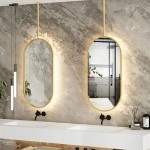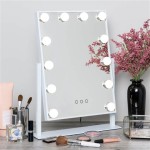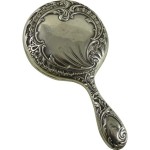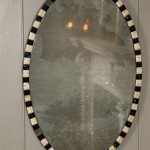Mirrored Wall Covering
Mirrored wall coverings offer a dynamic and versatile design solution for various spaces. From expanding perceived room size to amplifying natural light and creating striking aesthetic effects, mirrored surfaces provide a range of functional and decorative benefits. Understanding the different types, installation processes, and design considerations can help leverage the full potential of mirrored wall coverings in any project.
Types of Mirrored Wall Coverings
Several types of mirrored wall coverings are available, each with unique characteristics and applications.
Traditional Glass Mirrors: These are the most common type, offering a perfect reflection and a classic look. They come in various sizes and thicknesses, and can be custom-cut to fit specific dimensions. While offering superior reflectivity, they can be heavier and more fragile than other options.
Acrylic Mirror Sheets: These are a lightweight and shatter-resistant alternative to glass. They are often preferred for safety reasons, particularly in high-traffic areas or children's spaces. While acrylic mirrors offer good reflectivity, they are more prone to scratching than glass.
Mirrored Tiles: Available in a range of sizes, shapes, and finishes, mirrored tiles offer design flexibility. They can create unique patterns and textures, adding a decorative element to the wall surface. Grouting between tiles, however, can interrupt the reflective surface and impact the overall visual effect.
Mirrored Wallpaper: This option consists of a thin reflective layer applied to a wallpaper backing. It is a cost-effective and relatively easy-to-install alternative, particularly suitable for large surfaces. Mirrored wallpaper, however, typically has a lower reflectivity compared to glass or acrylic mirrors.
Self-Adhesive Mirrored Film: This flexible film comes with a peel-and-stick backing, making it a convenient DIY option for smaller projects or temporary installations. While easy to apply, the adhesive can sometimes be challenging to remove, and the film may be more prone to bubbling or wrinkling than other options.
Installation Methods
Installation methods vary depending on the chosen mirrored wall covering material.
Traditional Glass Mirrors: Typically require professional installation using specialized adhesives and mounting hardware. Proper surface preparation is essential for secure and long-lasting adhesion.
Acrylic Mirror Sheets: Similar to glass mirrors, acrylic sheets can be installed with adhesives or mechanical fasteners. Their lighter weight makes them easier to handle and install, but careful handling is still required to prevent scratching.
Mirrored Tiles: Installed similarly to regular ceramic or glass tiles using tile adhesive and grout. Achieving a level and even surface is critical for a seamless mirrored effect.
Mirrored Wallpaper: Applied like traditional wallpaper using wallpaper paste. Careful smoothing is necessary to avoid air bubbles and ensure a flat, reflective surface.
Self-Adhesive Mirrored Film: The simplest to install, requiring only peeling off the backing and applying the film to a clean, smooth surface. However, precision and care are needed to avoid wrinkles and air bubbles.
Design Considerations
Several design factors need consideration when incorporating mirrored wall coverings.
Space Enhancement: Strategically placed mirrors can create the illusion of a larger space, particularly in smaller rooms or narrow hallways. Reflecting light and views can open up a room and create a sense of depth.
Light Amplification: Mirrors can significantly enhance natural light within a space. Placing mirrors opposite windows or light sources can maximize light distribution and reduce the need for artificial lighting.
Aesthetic Impact: Mirrored surfaces can add a touch of glamour and sophistication to any interior. They can be used as a focal point or to create interesting visual effects by reflecting surrounding décor and architecture.
Maintenance and Cleaning: Regular cleaning is necessary to maintain the reflectivity of mirrored surfaces. Using appropriate cleaning solutions and techniques prevents streaks and damage to the reflective coating.
Placement and Framing
The placement of mirrored wall coverings significantly influences their impact. Consider what the mirror will reflect, aiming for visually appealing elements like natural light, greenery, or attractive architectural features. Avoid reflecting cluttered areas or unattractive views. Framing mirrored sections can add a finished and polished look, creating a sense of intentionality in the design.
Safety Precautions
While aesthetically pleasing, safety should always be a primary concern. Ensure proper installation to prevent mirrors from dislodging. In high-traffic areas or children's rooms, opt for safety-backed mirrors or acrylic alternatives to minimize the risk of shattering and injury.
Budget and Cost
Mirrored wall coverings are available at various price points. While self-adhesive films offer a budget-friendly option, high-quality glass mirrors represent a higher investment. Factor in installation costs, especially for larger or complex projects requiring professional expertise. Consider long-term value and durability when making a selection.

Modernizing A Mirrored Wall Tape To The Rescue Average But Inspired

Dark Grey And Gold Mirror Decorative Panels 3d Wall Easy Installation Sku Ggss

Mirror Wall Panels Boki Group

The Magic Of Mirrored Walls Double Space

How To Decorate A Mirrored Wall Custom Glass And Mirror Nyc

Wall Mirror Design 8 Decorative Mirrors To Transform Your Home

Wall Mirror Design 8 Decorative Mirrors To Transform Your Home

How To Cover Redo A Large Wall Mirror Decor Living Room

3 Ways To Cover Mirrored Walls Wikihow

Covering Mirrored Wall








